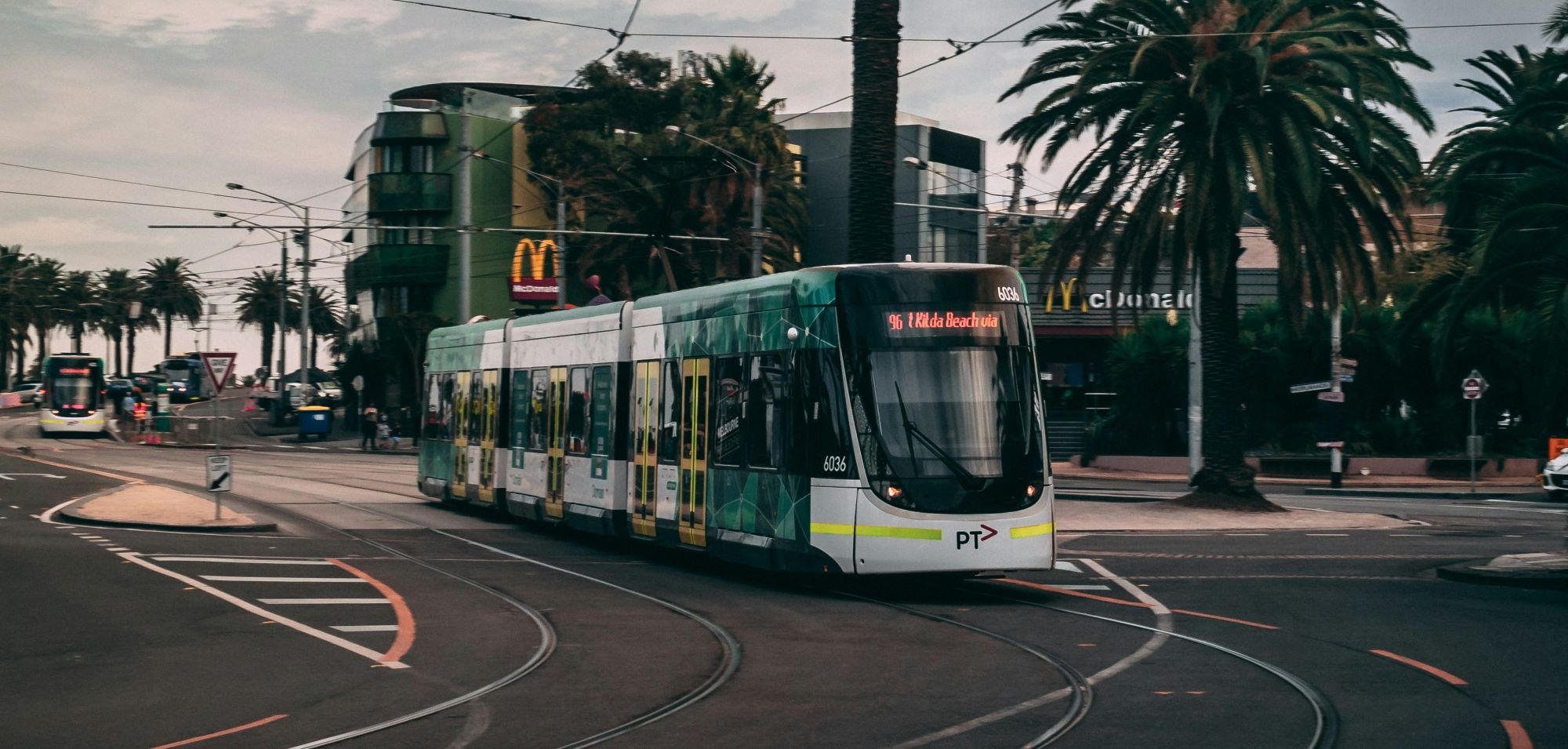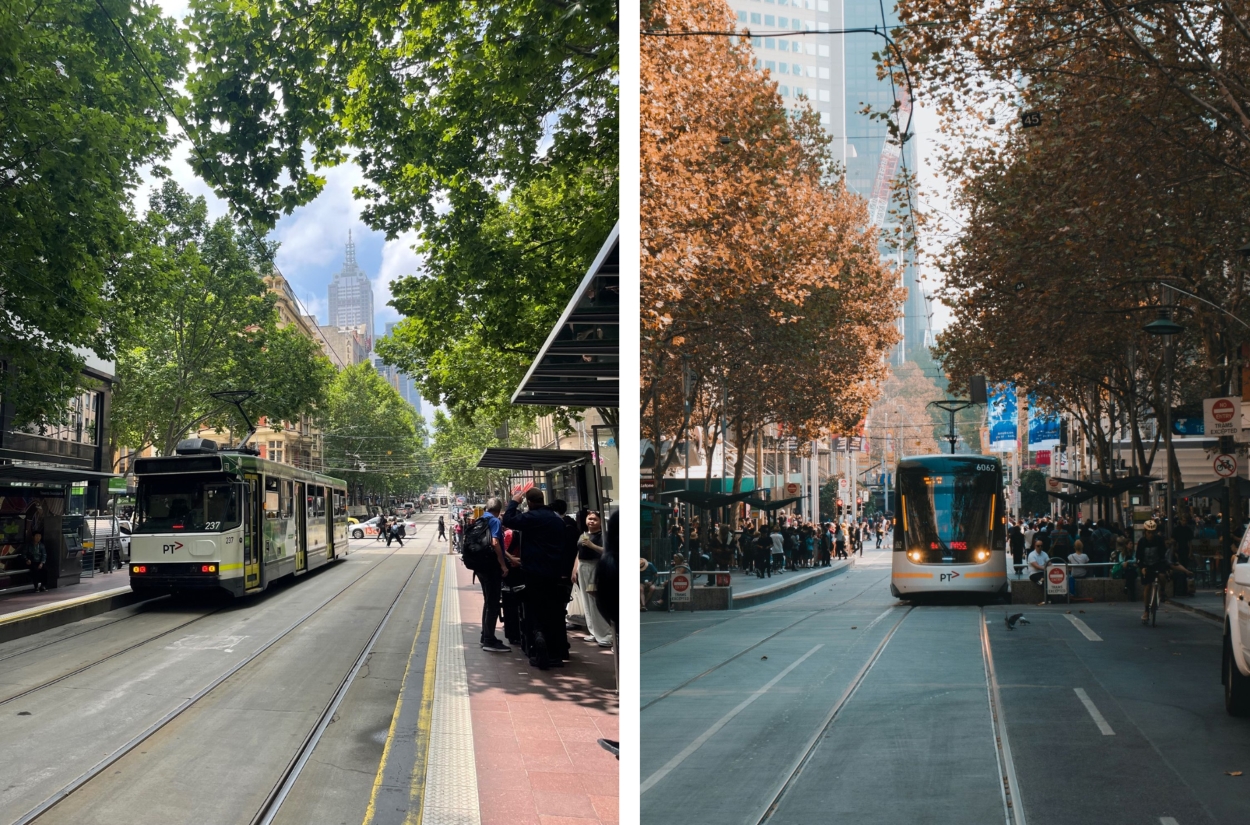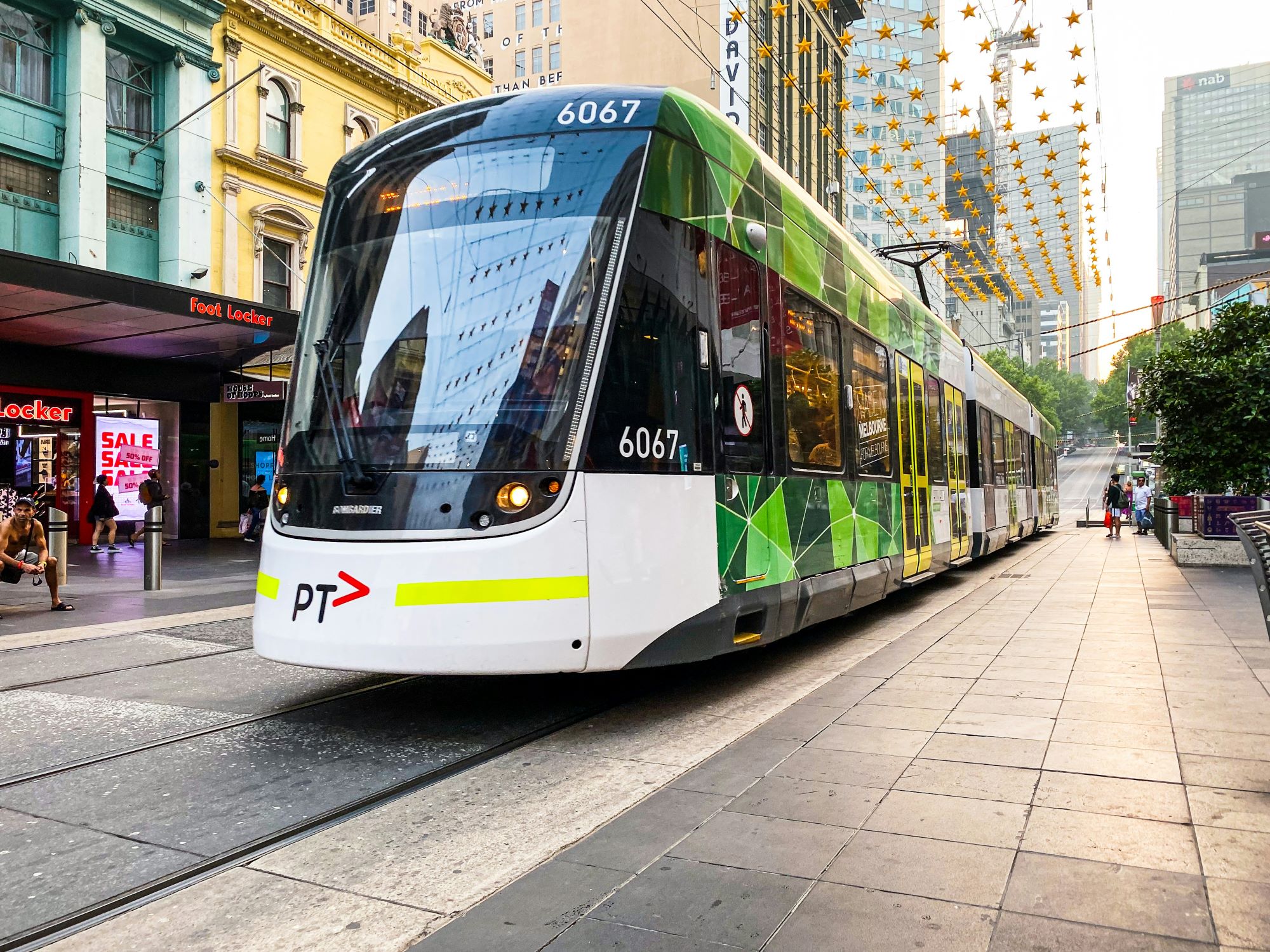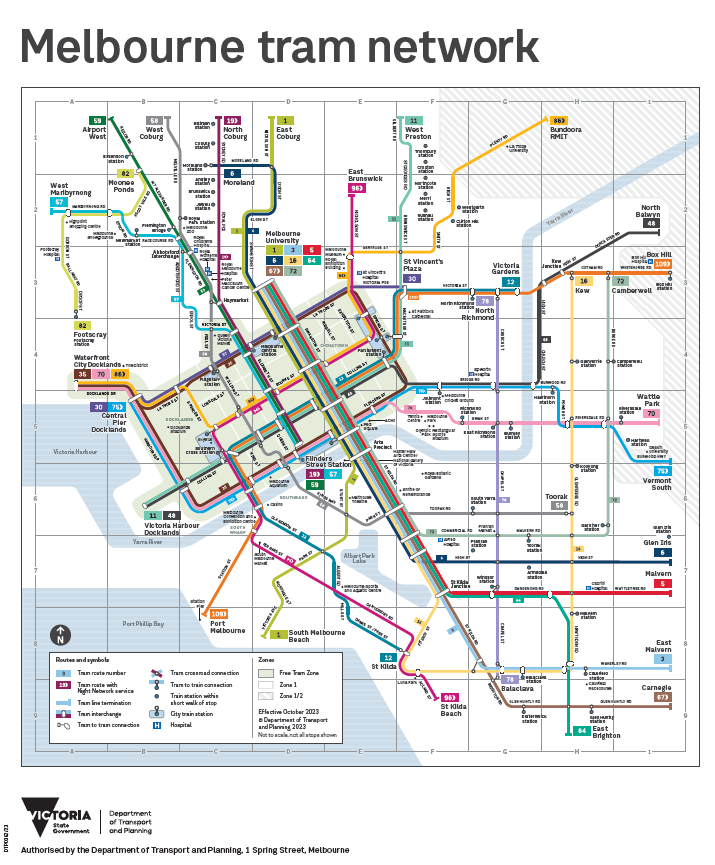Create Streets and the Campaign for Better Transport are working together on a new mission ‘Tram Network’, which will support more cities to create tram lines and work with government and industry to reduce their cost. In this blog, Tram Network member Liam Wring brings us lessons from the world’s biggest tram network – Melbourne, Australia.
Melbourne, the capital city of Victoria, has a metropolitan population of over 5 million and an extensive tram network. Spanning over 250 km of double track, with 1,700 stops and more than 500 trams in use, the network provides over 200 million trips annually. Melbourne’s trams are not just a way of getting around—they’re a key feature of the city’s identity.

A brief history lesson
In the mid-20th century, cities worldwide—including across the UK—saw their tram networks replaced by buses, driven by the rise of car ownership and the perception that buses were more modern and adaptable. London, once home to the largest tram network, had removed its network entirely by the 1950s.
Melbourne, however, defied this trend largely due to Sir Robert Risson, chairman of the Tramways Board. Risson strongly believed that trams were the most effective urban transport method for inner-city suburbs, particularly in Melbourne, with its wide streets and grid layout. Owing to his experience as a Major-General in the Army, he managed the tramways with military discipline. Despite mounting political and media pressure, Risson remained confident in his vision.
His passion and advocacy not only secured the network’s existence, but also enabled its expansion and development, making Melbourne home to the world’s largest tram network today. For his contributions, Sir Robert Risson was knighted in 1970, the same year he retired as Chairman of the Tramways board. His efforts and determination have proven to be visionary as cities across the globe look to reinstate tram networks.
Trams as a force multiplier to all transport types
Melbourne’s tram stops serve key city locations and transport interchanges, making it easy to switch between trams, buses, and trains. The city is currently enhancing its public transport through the Metro Tunnel Project, which will add five new underground train stations by next year. Trams will complement the Metro Tunnel Project by offering direct access to these new stations, improving connectivity and efficiency of the city’s public transport system.
Think Melbourne. Think Tram
As a staple of Melbourne for over 130 years, trams in Melbourne are more than just a practical solution—they’re part of the city’s identity. This is highlighted by iconic W-class trams, which have long featured in Melbourne tourism promotions. They are also used in the free ‘City Circle Tram’ service, which loops around the city’s top attractions, featuring audio commentary on the city’s history for tourists.
Modern developments
In 2015, the city introduced its Free Tram Zone, allowing free tram travel within the city centre. Designed primarily to help tourists with city navigation, it makes exploring Melbourne more accessible while also easing traffic congestion by promoting public transport usage.
The network isn’t just convenient—it’s also sustainable. Since 2019, over 400 trams have been running carbon-neutral, thanks to the State Government’s Solar Trams Initiative. It offsets 200,000 tonnes of carbon emissions annually with solar power, highlighting Melbourne’s cleaner and greener efforts for city travel.
• Tram corridors have driven 84% of new housing developments within 400 meters of activity centres in Melbourne’s Inner South East Metro Region.
• The tram network directly and indirectly supports over 5,000 jobs, including roles in operations, maintenance, infrastructure development, and associated industries.
• The state is investing $3.8 billion in the tram network to enhance connections to 25 Activity Centre locations, providing people with improved access to employment and housing options without the reliance on cars.
• Findings show that inner Melbourne tram operations contribute to reduce congested links by approximately 28% and travel delay by 66%.
What can the UK learn from Melbourne’s Tram Network
Melbourne’s tram network highlights the importance of long-term approach to an accessible, integrated transport system. It offers valuable lessons for the UK in building modern, sustainable, and accessible urban transport systems. Here’s how UK cities can take note:
Integration, Not Competition: Melbourne’s trams complement buses and trains, forming an integrated network. UK cities should adopt a similar approach, where different modes collaborate rather than compete with each other.
A Necessity, Not a Luxury: Trams are an essential part of Melbourne’s infrastructure, not optional extras. The UK must embrace the mindset of not seeing trams as a luxury or a leftover from the past, instead seeing trams as a key part of the solution to the environmental and mobility challenges that UK cities face today.
Planning for the future: Sir Robert Risson preserved Melbourne’s trams when many other cities were abandoning theirs. His forward-thinking leadership ensured long-term benefits for the city. Cities across the UK must now make similar strong decisions that invest in tram networks that can tackle congestion, pollution, and urban growth for the future. Understanding the long-term value of these investments is crucial, and the UK must prioritise creating cleaner, greener, and more connected cities for generations to come.
If you want to get involved with the Tram Network drop us a line at contact@createstreets.com to help us get 15 tram lines under construction within 5 years.




